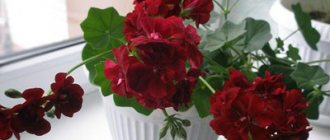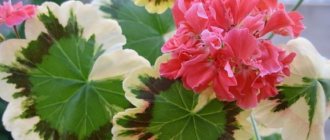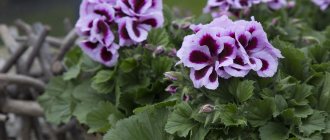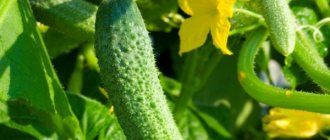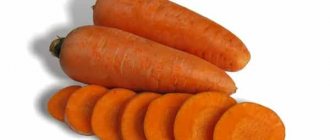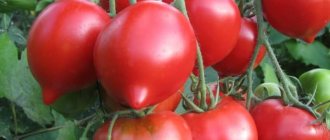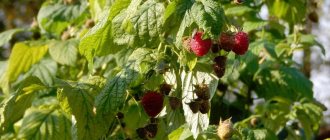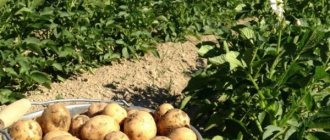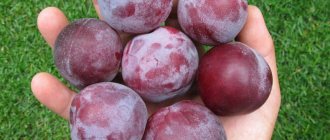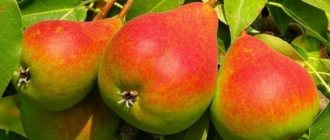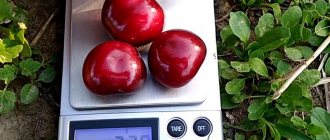Characteristics and Features
Denise pelargonium is highly valued for its harmonious combination of charming appearance and easy cultivation. The plant is called the standard of beauty for a large variety of rosebud pelargoniums. Currently, thousands of lovers of beautiful flowers want to plant this luxurious flower crop in their flower beds and gardens. There are even clubs and online forums for rosebud lovers, where the nuances of growing Deniz pelargonium are actively discussed.
Pelargonium Denise
Characteristics and description of flower culture:
- The compact and strong plant has the appearance of a miniature bush.
- The leaves are dark green in color with a dark border along the edges.
- The buds externally resemble small terry roses of light pink color with a brighter edging of delicate petals.
- Inflorescences in the form of fluffy caps are abundantly and evenly located on long stalks throughout the bush.
- The coloring of the buds is very impressive with smooth transitions from a light center to a more saturated shade towards the lower petals.
- The fruit is a seed capsule with small seeds.
The closest “relatives” of Deniz Sutarve pelargonium are zonal rosebud varieties, which are united by an external similarity with the royal flower - the rose. This variety is considered the most spectacular and perfect. The appearance of the flower causes real admiration and is considered the height of graceful beauty. Looking at this extraordinary beauty, you will never think that this beauty is, by and large, just a geranium.
Pelargonium Denise - what kind of flower is it
Pelargonium Denise belongs to the genus Pelagonia, family Geranium (Pelargonium). Africa, more precisely its southern part, is considered the birthplace of this plant. It was brought to Europe at the end of the 17th century, when trade routes were well explored and trodden. Since the 18th century, the plant has conquered not only port cities, but also triumphantly marches deeper into the continent.
Pelargonium Denise
The description of the flower indicates that pelargonium, unlike its relative geranium, has the same upper and lower petals, and they also differ in color and tone, which makes the plant especially exquisite.
Brief description, origin story
Botanical description Denise pelargonium is classified as a perennial shrubby plant. The flower stems are straight or branched. The inflorescences are in the form of umbrellas, located on the stems. The main natural color of the inflorescences is pink, interspersed with other shades.
After the end of the flowering period, capsule fruits are formed, the opening of which is carried out from the bottom up.
The plant, whose homeland is considered to be dry areas of Africa, easily tolerates long periods of drought. But as for winter colds, Denis is a pelargonium that does not treat them well. It is enough to lower the temperature to -2...-3 degrees and it dies.
This is interesting! According to some flower lovers, Denise geranium is a healing plant. It has found application in cosmetology and the production of medicines. Essential oils obtained from the leaves of the plant are used in the treatment of respiratory diseases.
Features of care
In order for the crop to grow and develop well in the future and delight with lush flowering, it needs to create the necessary conditions. They will be discussed below.
Lighting
The container with the plant must be placed so that it is not exposed to direct sunlight. If this happens, then:
- flowers will quickly lose their attractiveness;
- the petals will become faded;
- the abundance of flowering will decrease;
- the flower will look sick.
Temperature
In order for a flower to develop well and bloom magnificently, it needs high air temperature. It does not tolerate low temperatures well, so when the air becomes colder than 10 degrees Celsius, the flowerpot is removed indoors.
Watering
The plant requires regular moderate watering. To moisten the soil, use soft water that has been pre-settled at room temperature. Excess moisture in the soil should not be allowed, otherwise the roots will begin to rot.
Top dressing
As the flower grows, it requires regular feeding. To do this, you should use complex formulations with a high content of:
In this case, there will be no problems with the development of the crop, and it will quickly begin to delight with beautiful buds.
Transfer
The plant needs to be replanted annually; it is done in early spring. First, prepare the soil, which includes:
When it is not possible to prepare the soil yourself, you can purchase ready-made flower fertilizers with neutral acidity.
Trimming
A young plant requires formative pruning to form a compact bush with a high decorative component. During such pruning, very long shoots need to be shortened, leaving branches 10-15 cm in length. After this, a month will pass, and the plant will already form a bush and begin to bloom.
Wintering
During the cold season, the plant loses its decorative appeal and stops blooming. It needs to be left in the dormant stage until spring. At this time the flower:
- watered rarely;
- do not feed;
- kept in a room with a temperature within 10-15 degrees Celsius.
At the end of winter, the pot is moved to a warmer room and fertilizers begin to be applied. This allows the plant to come to life and begin to develop. As a result, already in the summer it pleases others with its first flowers.
Agrotechnics of cultivation
Pelargonium Fischers Appleblossom
Delicate pelargonium denise sutarve requires special care:
- It is not recommended to place the flower container with the plant in sunny, unprotected places. Under direct sunlight, the decorative quality of flowers quickly becomes lost, the petals become faded, the floweriness of the plant decreases, and it looks unhealthy. When grown in open ground, the hot sun does not pose a big threat to the decorative appearance of rosebuds.
Pelargonium in open ground
- Moderate watering with lukewarm, soft, settled water. Excessive watering, which causes rotting of the root system, should be avoided.
- Plants do not tolerate low temperatures well, therefore, when the outside temperature drops to +10 degrees, the flowerpot with flowers should be removed from the balcony or loggia; when grown in open ground, it should be covered with a translucent covering material.
- The transplant is carried out in early spring, when an increase in daylight hours will cause active growth of pelargonium.
- The recommended composition of the soil mixture includes turf soil, peat, coarse sand, perlite and humus. The components of the soil are prepared at a ratio of 4:2:1:2:2. If it is not possible to prepare the soil mixture yourself, you can go shopping at a flower shop and purchase ready-made flower soil for pelargoniums with neutral acidity.
Note! The transplanted flower bush is watered very carefully at first, trying to avoid excessive moisture. A signal that the flower has taken root will be the appearance of new rosettes with leaves on the stem.
It is recommended to prune grown pelargonium correctly to form a compact, beautiful bush. Shoots that are too long are shortened and branches 10-15 cm long are left. In a month, the plant will form into a nice bush and will be ready to flower.
Diseases and pests
Like all other types of indoor plants, Clara pelargonium can be susceptible to attack by harmful insects, as well as various flower diseases. Some of them can be destructive.
Next, we will consider which of the dangers pose the greatest threat to this pelargonium. Is this danger great and can it be avoided?
We will also look at what they can be fraught with. What of all of the above can be defeated and what cannot be cured, you will learn further.
As for parasites, in this case the following pests pose the greatest danger:
- aphid;
- spider mite;
- whitefly
To cope with the mite, you will need to use special fungicidal preparations. And whiteflies and aphids can be destroyed by products containing permethrin.
Of the diseases, the most dangerous for the plant is root rot - the so-called “black leg”. The disease occurs when the soil moisture regime is disrupted.
Note that blackleg cannot be treated, and if this disease occurs, pelargonium will have to be destroyed. To prevent the disease, it is recommended to thoroughly sterilize the soil before planting the plant, and also not to allow the substrate to become waterlogged.
Plant propagation
Denis pelargonium reproduces in the same way as all its “neighbors” pelargonium: by seed and cuttings. When planting seeds, there is no guarantee that the plant will inherit all the characteristics and characteristics of the variety.
For this reason, rosebud pelargoniums are propagated exclusively by cuttings. Beginning flower growers often complain about rotting of planted cuttings. It is very disappointing when, with such difficulty, a cutting of your cherished dream - the beautiful Denizka - is acquired, but the efforts made do not bring the desired results, and the plant does not take root.
To avoid such disappointment, you can use the following recommendations:
- The optimal time for plant rooting occurs in March and lasts until July.
- Cuttings are taken from an adult plant. To do this, a cutting with 3-5 pairs of leaves is cut from a semi-lignified shoot. If you take a green grassy shoot, you won’t get a full-fledged cutting from it.
On a note. At the end of February, the pelargonium plant is moved to a warmer room, fed, and soon the bush begins to actively develop and by mid-summer pleases with its first buds.
Popular varieties
There are several varieties of Denise pelargonium. All of them belong to the category of zonal rosebud pelargoniums. To understand how they differ from each other, you can read a detailed description of the two most popular varietal plants.
Pelargonium Denise Sutarve
Pelargonium Denise and Denise Sutarve, what are the differences:
- Denise from Swedish nursery Sutarve is a small compact plant that grows as a bush. Abundant flowering with “roses”, the petals of which do not open completely. Half-buds are a delicate pink-salmon shade with a wide border along the edge.
- Denise (Belgium selection) blooms with buds in the form of miniature roses that open fully. In a fully opened bud, the stamens are visible in the middle.
Currently, these varieties of pelargonium are at the peak of popularity. Every gardener dreams of growing a majestic beauty in his flower garden. In order to purchase a cutting or an adult plant of these particular varieties and not buy a fake, it is better to make a purchase in trusted nurseries with a good reputation.
Advantages and disadvantages
Pelargoniums Denise are the undisputed favorites of the Geranium class and are highly valued by flower growers for their following advantages:
- Huge, densely double “roses” of delicate peach shades with pink edging of the petals.
- Dense buds with a large number of petals during flowering are collected into an even flower rosette.
- In hot weather, the bud fully opens in the form of a gorgeous rose.
- The plant "Denise" is formed into a small compact bush.
The rose-colored beauty Denise has virtually no flaws. There are only a few features of this wonderful plant that should be taken into account when growing it:
- Under the hot rays of the sun, the variety can change its delicate color to a more intense, rich color.
- In hot weather, shredding of leaves and a decrease in the number of inflorescences are observed.
- Rosebuds do not tolerate low temperatures well; reducing the air temperature to + 5 degrees is already critical for them.
- Denises do not like excessive humidity. Excess and stagnation of moisture have a detrimental effect on the plant and can cause the development of fungal diseases.
It’s impossible not to admire Denise’s pelargonium. Beautiful and delicate buds delight with their exquisite beauty. If we add unpretentiousness, ease of care and maintenance, then it is quite clear why this beautifully flowering plant is so wildly popular.
Plant Care Guide
The rules for planting and caring for a flower are not so complicated, but if you do not adhere to them, the gardener will never see his flower blooming magnificently - such is Denise’s pelargonium.
Lighting and location
The plant loves light, so it is recommended to keep the flower at home where there is a lot of sun, preferably on a windowsill. In summer, the flower can be taken out to the balcony or terrace, or to the garden.
The plant should be shaded from direct sunlight to avoid burns of leaves and stems.
If the plant is kept outdoors in the summer, then there is no need to darken it. Lack of light leads to the most negative consequences:
- Poor flowering.
- Yellowing of the leaf and its falling off.
Temperature
The air temperature should be moderate. Optimal mode:
- summer – 20-25 degrees;
- winter – 12-15 degrees.
Temperatures that are too low can significantly impair the health of the plant.
Soil requirements
For pelargonium, Denise needs loose, nutritious soil with a neutral acid reaction. There are special soil mixtures for this flower on sale.
If the gardener prefers to make his own soil, he will need:
- turf;
- humus;
- peat soil;
- sand.
The first three items are taken in equal volumes - two parts each, while sand needs one part.
Important! To plant pelargonium, soil disinfection is necessary!
In addition, the flower also needs drainage. For this use:
- expanded clay;
- small pebbles;
- pebbles;
- brick fight.
Watering
The plant needs regular watering, but not very much. The principle is this: it is better to underfill than to overfill. The second option is fraught for Deniz with very rapid rotting of the root system. Therefore, the signal for the next watering will be a noticeable drying of the top layer of the substrate.
There is no need to spray the flower, as this can lead to the development of rot and fungus.
Top dressing
For active flowering and health, Deniz needs regular feeding in the form of complex mineral supplements. This event is held in the spring as follows:
- In order for lush greenery to form, the soil is enriched with nitrogen.
- At the very beginning of flowering, a transition is made to potassium-phosphorus fertilizing - this will ensure lush flowering.
Landing
Let's find out what requirements Pelargonium Denise has for its habitat and maintenance.
Location and lighting
Pelargonium Denise, like all rosebuds, is a light-loving plant. At home, it is therefore recommended to keep the flower on a sunny windowsill, and in summer you can take it out onto the balcony, terrace, or even into the garden. Note that it is better to shade Denise from direct sunlight on the windowsill so that there are no burns on the leaves and stems, and when grown outdoors in the summer, such shading is not required.
Temperature
The plant feels good at moderate air temperatures, however, prolonged maintenance at too low temperatures has a bad effect on the health of the plant and can cause great harm. The optimal option is to grow Denise in the summer at a temperature of +20-25 degrees, and in the winter during the dormant period - at +12-15 degrees.
Priming
Pelargonium Denise needs nutritious loose soil that has a neutral acid reaction. Stores sell ready-made soil mixtures intended for geraniums and pelargoniums - in this case they are optimally suitable.
If you want to make the substrate yourself, then take the following components:
- peat soil - 2 parts;
- turf - 2 parts;
- humus - 2 parts;
- sand - 1 part.
Just remember to disinfect the substrate you prepared yourself, especially if the components for it were used from the street.
To prevent the soil from becoming waterlogged, place a drainage layer on the bottom of the pot in the form of small expanded clay pebbles, pebbles or broken bricks.
Diseases and problems
Pelargonium Denise, although not too picky, however, can also be affected by diseases and pests. Next, we’ll find out what problems arise most often when growing this flower, and how to deal with these problems.
Gray rot
This disease most often threatens rosebud pelargonium. You can tell that a plant is affected by rot by the gray fluffy coating that appears on its leaves. The appearance of this disease is provoked by waterlogging of the soil and cool air temperature.
To deal with gray rot, you need to inspect the plant and carefully remove all affected leaves. After this, pelargonium should be sprayed with a systemic fungicide.
Rust
This disease is also a common problem when growing Denise pelargonium. The symptom of the disease is the characteristic spots of brown, brown, rusty shades that appear on the leaves. The affected foliage is removed and the plant is treated with a fungicidal preparation.
Whitefly and mealybug
These pests pose the greatest danger to Denise's pelargonium. Whitefly larvae may already be present on the newly purchased plant, so carefully inspect the pelargonium bush before purchasing. If you see white eggs or larvae on the leaves, it is better to refuse the purchase, since it is quite difficult to remove whiteflies. Mealybugs reveal themselves as white, cotton-like clusters in leaf axils.
Special systemic insecticides will help get rid of these pests. However, treatment must be carried out as early as possible, before insects cause irreparable damage to the plant.
No flowering
If Denise's pelargonium refuses to bloom, the reason may be that the plant is kept in too warm a winter. Keep in mind that in order to form healthy and abundant inflorescences in winter, Denise must be kept at a temperature of +12 to +15 degrees, no higher.
Care
Let us consider in detail the main points for caring for this plant.
Watering
Pelargoniums of rosebud varieties need regular, but not too much watering. The plant will tolerate drought better than waterlogging, since in the latter case its roots begin to rot very quickly.
It is recommended to water when the top layer of soil in the pot dries out. In summer, water more often, but in winter, the procedure can be carried out only when the soil has already noticeably dried out, but not completely.
Denise does not need spraying: air humidity is not a problem for her. Moreover, spraying and excessively humid air can be harmful to the plant, as they lead to the development of fungal diseases and rot.
Top dressing
To make Denise feel good and bloom actively, regularly feed her with mineral complex supplements
In the spring, it is important to add nitrogen to the soil to form lush greenery, and at the beginning of flowering, switch to potassium-phosphorus fertilizers to form lush inflorescences. In winter, pelargonium Denise does not need feeding
Trimming
This procedure is necessary for the plant, however, Denise does not always tolerate illiterate pruning. Therefore, in order for the flower to react positively to the procedure, you should follow several simple rules:
- prune the plant for the first time only after it has completely taken root and taken root;
- use only well-sharpened and thoroughly disinfected cutting tools;
- Pinching should be carried out as young shoots grow, so that more active lateral branching occurs;
- in the fall after flowering, rid the plant of dried, weak and diseased branches.
Planting and transplanting
The plant is unpretentious, but it is important to provide it with normal care.
For pelargonium to grow and bloom, it is necessary to create optimal conditions for the plant.
Choosing a place and pot
The pelargonium variety Sutarves Klara Sun needs natural light, so place the plant on the south or southeast side.
However, in summer it is important to create openwork shading for the flower to protect it from direct rays of the sun. Suitable pot diameter - approximately 2 cm larger than the crown projection
If you choose a larger container, the plant will spend a lot of energy on developing the root system rather than growing and flowering.
A suitable pot diameter is approximately 2 cm larger than the projection of the crown. If you choose a larger container, the plant will spend a lot of energy on developing the root system, rather than growing and flowering.
Note! The pallor of pelargonium foliage will indicate a lack of light.
Soil selection
Almost any soil is suitable for Sutarve pelargonium, but a drainage layer of crushed brick and expanded clay is important. This is the prevention of waterlogging.
Slightly acidic or neutral soil is suitable. You can prepare the substrate yourself by mixing leaf soil, sand, humus and turf in equal proportions.
Step by step planting process
It looks like this:
The container is filled with drainage and substrate, then moistened. Seeds are placed on the ground at a distance of 4 cm from each other. Carefully deepen by 0.5 cm and sprinkle with earth. Gently moisten with a spray bottle. Wrap the container in plastic wrap to create a greenhouse effect.
After about 10 days, sprouts will appear. After this, the film is removed and the container is placed closer to the light source.
Plant propagation
Denis pelargonium reproduces in the same way as all its “neighbors” pelargonium: by seed and cuttings. When planting seeds, there is no guarantee that the plant will inherit all the characteristics and characteristics of the variety.
For this reason, rosebud pelargoniums are propagated exclusively by cuttings. Beginning flower growers often complain about rotting of planted cuttings. It is very disappointing when, with such difficulty, a cutting of your cherished dream - the beautiful Denizka - is acquired, but the efforts made do not bring the desired results, and the plant does not take root.
To avoid such disappointment, you can use the following recommendations:
- The optimal time for plant rooting occurs in March and lasts until July.
- Cuttings are taken from an adult plant. To do this, a cutting with 3-5 pairs of leaves is cut from a semi-lignified shoot. If you take a green grassy shoot, you won’t get a full-fledged cutting from it.
- The soil mixture for germinating a plant should be light and breathable, for example, peat + soil soil or coconut filler, the main thing is that the soil is neutral in acidity.
- The cuttings are dried on paper in the open air for one to two hours, the lower leaves are removed and planted in the ground, slightly buried in the ground.
- The planted cuttings are carefully watered, trying not to create excessive humidity.
- Water for irrigation is pre-settled for several hours at room temperature.
- Place the container with cuttings for rooting in a bright, well-lit room, for example, on a windowsill. In approximately half a month, the cuttings will acquire their first thin roots.
- As the flower grows, it is periodically fed with potassium-phosphorus complex fertilizers.
- In winter, the plant loses its decorative effect a little and practically does not bloom. Therefore, it is best to leave the rosebud dormant until spring, rarely water it and not apply any fertilizer. The recommended winter temperature for Denizok is only +10-15 degrees.
On a note. At the end of February, the pelargonium plant is moved to a warmer room, fed, and soon the bush begins to actively develop and by mid-summer pleases with its first buds.
Description of varieties
Among the varieties of pelargonium of the Elnaruds series, there are the most common ones.
Hilda
Compact pelargonium with lush double buds of uneven pink and white color. The leaves are yellow with a brown spot in the middle. Hilda tolerates heat well and has a long flowering period.
Gusten
A vigorously flowering variety of pelargonium Elnaryds. The inflorescences are dense, the buds are peachy-pink. The bush has a compact shape.
Variety Gusten
Bente
Zonal pelargonium. It reaches a height of 10 cm. The inflorescences are lush and double. The buds are apricot-red. Flowering of this species begins in May and continues until the end of September.
Bente flower
Otto
Otto is often used to decorate balconies and verandas. The buds of this variety are orange in color, gradually turning into soft pink. The bush reaches a height of 10 cm. Flowering begins in late spring.
A variety of flower called Otto
Singoalla
House plant with white, slightly pinkish flowers. The bush is compact and easy to shape.
Pelargonium Singoalla
Lilian
A dwarf plant with double voluminous inflorescences. The buds can be bluish-lavender in spring and pink in summer.
Representative of the Lilian variety
Clarissa
Lush bush with snow-white double flowers. The plant is compact and does not require formation.
Clarissa flower
Description, history and photo
Pelargonium amazes with its fragrance. The Denise variety is perhaps the best of all rosebuds, because its numerous pink buds seem to be connected into luxurious inflorescences.
The bushes are low - only 60-80 cm, but quite powerful. If the bush is formed correctly, then it looks especially impressive. It is noteworthy that in the middle of the flower the petals are lighter than the lower ones, and this contrast gives the Denise variety a special charm.
This flower is native to South Africa, so it tolerates lack of moisture relatively easily.
Attention! Quite often, instead of the Denise variety, some sellers try to sell cuttings of other rosebud varieties, taking advantage of their external similarity. Therefore, it is reasonable to make a purchase at a nursery to protect yourself from counterfeits. This flower is recognized by both specialists and amateurs as the most perfect of the entire family
Many people call her Denis, or even more affectionately – Deniska
This flower is recognized by both specialists and amateurs as the most perfect of the entire family. Many people call her Denis, or even more affectionately – Deniska.
Reproduction
Since Denise is a rosebud pelargonium, the plant propagates exclusively by cuttings. The fact is that hybrid varieties of pelargonium are not capable of transmitting parental properties through seeds. That is, from Denise’s seed an ordinary pelargonium will grow, but not rosebud.
In this case, it will take about a year for a cutting to grow into a full-fledged plant. Although if you root the cutting in the spring, it will be able to bloom for the first time in the same summer.
Experienced flower growers advise taking petioles in March-February: however, if you have only one Denise, then it is better to wait for the end of her flowering and cut the stalk in the fall. In winter, the petioles are not cut off, since in short daylight conditions the young plant is unlikely to be able to fully develop.
Algorithm for the rooting procedure
- The apical shoot, five to seven centimeters long, is cut from the mother plant. It is necessary that the shoot have at least three internodes and at least four leaves.
- The cuttings are dried in paper for one to two hours. Also, from its lower part (the one that will be underground), you need to cut off all the leaves and, if any, inflorescences. The last measure will protect the cuttings from rotting.
- Root the shoot into a prepared moistened substrate (soil + sand/perlite), deepening it to one internode. It is recommended to place the container with the cutting in a warm and well-lit place - for example, on a windowsill.
- With regular watering and sufficient lighting, the cuttings will take root in two to three weeks. If you take a transparent plastic glass for this task, you will be able to accurately verify that rooting has taken place.
Pelargonium has no less interesting other types, for example, royal, ivy-leaved, fragrant, yellow, ampelous, dwarf, terry, variegated, tulip-shaped.
Features of reproduction
This process is only possible with cuttings. The whole problem is that Denise's pelargonium is not able to transmit parental properties through seeds. In other words, if you try to make a seedling from a seed of the Denise variety, you will get the most ordinary, non-rosebud, pelargonium.
The path from a cutting to a finished seedling lasts about a year . If rooting occurs in the spring, then the young plant can produce its first color in the coming summer.
Experienced flower growers recommend taking a cutting from February to March, but if the owner has only one copy of Denise, then it is better to wait until the plant has flowered and take the shoot in the fall.
This is not done in winter, since due to the short daylight hours the cuttings will not be able to fully develop.
Transfer
Pelargoniums in pots grow quickly and therefore require replanting quite soon. It is better to do this in the spring, before the active development of the flower.
The flowerpot should be 2-3 cm larger in diameter than the previous one, and the soil should be fresh.
Soil composition:
- humus;
- peat;
- sand;
- turf;
- perlite
Ratio: 2-2-1-4-1. If desired, you can also purchase ready-made soil.
Further:
The plant is kept in moderately moist soil for several days. The appearance of new shoots indicates successful rooting. This is followed by pruning to form a bush, in addition, this stimulates flowering
This is done with care; the young shoot is removed at the very base or stems 5-7 cm long are left.
The watering regime is moderate, even careful. The light should be sufficient, but without direct rays of the sun.
Anyone who wants to place an unpretentious, long- and abundantly blooming pelargonium on their windowsill will be able to find their favorite variety. On our website you will find descriptions and photos of such types of flowers as: royal, dwarf, ampelous, terry, tulip-shaped, garden, pack Viva, Silk and Ludwigsburg Flyer.
Variety Denise is the most pompous flower among rosebud pelargoniums. It is characterized not only by its magnificent appearance, but also by its unpretentiousness, since it is not so difficult to grow it. Nevertheless, you need to choose the right place for it in the house and properly care for the plant, following simple rules. Good luck with breeding the Denise variety!
Reproduction
Pelargonium Clara Sun propagates well at home using the method of dividing the bush, as well as by cuttings. It is better to carry out the breeding procedure either in early spring or in mid-late summer. In addition, seed propagation of the plant is also possible, however, in this case there will be much more trouble. Below are instructions regarding different methods of propagating pelargonium.
Seeds
In this case, the seeds are planted in the ground around January. The soil should be slightly moist and fairly loose and nutritious.
The top of the container with the planted seeds must be covered with polyethylene so that seedlings appear faster. The optimal air temperature outside is +20-24 degrees.
Periodically, the soil must be sprayed with a spray bottle. Shoots usually appear 15-20 days after planting the seeds.
As soon as a couple of leaves appear, it is recommended to pick the seedlings, and then continue growing for another two months. Then the strengthened sprouts are transplanted into separate pots.
Cuttings
To get full-fledged cuttings, it is recommended to cut off the lateral and apical shoots from the mother plant. The length of the cutting should not exceed 7 cm, and it must have at least 2-3 leaves. The cut must be sprinkled with activated carbon, and then the cutting must be dried for a couple of hours, wrapped in paper. After drying, the cuttings are planted in the ground, and the container should then be placed in a warm place.
When watering the soil, it is important to direct the stream only to the ground, without touching the leaves of the cutting. Otherwise, the shoot may rot before it has time to take root.
Within a month, with proper maintenance and care, the shoot takes root.
Pelargonium is an amazing indoor plant, because this flower has many interesting varieties, for example, Richard Hudson, Star, Millfield Rose, Anita, Rococo, Grandiflora, Red Pandora, Lady Gertrude, Patricia Andrea, Denise.
Reproduction methods
To grow the Pelargonium Denise flower, you can use two methods - seed and cuttings. If you use seeds to propagate a crop, no one can guarantee that the characteristics and characteristics of the variety will be preserved. It is for this reason that the vegetative route is more often used.
Propagation by cuttings
To grow Pelargonium Denise, you must first prepare cuttings; they are cut from an adult bush. A stalk that has 3-5 leaves is cut off from a semi-lignified shoot. The shoot should be exactly like this, because a full-fledged cutting will not come out of a green grassy stem.
The prepared cuttings need to be dried on paper, placing them in the open air. This process takes 1-2 hours, after which:
- remove the lower leaves;
- The cuttings are planted in a pre-prepared container with soil.
During planting, you need to slightly deepen the plant into the soil and water it, avoiding excess moisture.
The container with Pelargonium should be placed in a well-lit place, this could be a windowsill. In good conditions and with proper care, the cuttings will take root after just 2 weeks and will begin to actively grow and develop to the delight of the owner.
Flower propagation methods
Those who dare to propagate hybrid pelargoniums by seeds should remember that they can grow into seedlings that are completely different from the mother plants. Therefore, it is better to choose the method of plant cuttings. As cuttings, you can use sections of branches obtained when trimming bushes in autumn and spring. Root the cuttings in water and soil in individual and shared containers.
Propagation by seeds
The process of growing pelargoniums from seeds occurs in specially created conditions. To do this, prepare either general greenhouse containers and a soil mixture with neutral acidity, or individual pots. Seeds are sown on compacted soil, sprinkled with a thin layer of dry sand or well-crushed soil.
It is necessary to maintain the required level of soil surface moisture using a spray bottle with fine spray. Abundant flows of water should not pull seeds to great depths into the soil.
For reference! Geranium seeds can be sown at any time of the year, but in short-day conditions, artificial additional lighting will be required for normal seedling growth.
Pelargonium cuttings
Rooting of geranium cuttings in the soil is carried out in spring, summer and autumn. Cuttings taken from plants at the beginning of the growing season - in the spring - take root best.
Summer rooting is often accompanied by rotting of the cuttings, so during this period it is important not to over-moisten the soil. Autumn rooting work should be accompanied by the creation of not only a warm microclimate, but also long daylight hours
Rooting geranium cuttings in an individual container
Features of plant flowering
Representatives of the genus Pelargonium in the climatic conditions of central Russia have two development phases of different durations throughout the year.
Over the course of 9 months, from March to November, the plant increases the size of its roots, grows green mass - stems, leaves, buds, blooms, forms fruit capsules in which the seeds ripen, and then begins to slow down all its internal processes.
In December, Denis, pelargonium must go into hibernation so that during this period its roots can take a break from continuously absorbing and pumping moisture and nutrients to the stems, leaves and flowers. Therefore, it is so important at this time to change the favorable thermal regime and lighting conditions of geraniums to more severe ones.
Plants of different types can be placed in one pot when transplanting.
Growing pelargonium Denise at home
As practice shows, pelargonium denize is not particularly demanding in terms of care, and the creation of normal conditions during planting usually ensures the lion's share of the success of plant cultivation. But, nevertheless, achieving a stable result in flowering requires compliance with certain rules.
Illumination and temperature conditions
Pelargonium is a light-loving plant. The southern and eastern sides of the house are better suited for it. In summer, when plants are placed outside, slight shading is recommended during the summer heat.
In the autumn-winter period, it is recommended to reduce the amount of light, but even at low temperatures it should be enough. When leaves appear faded on geranium sutarve, it is necessary to increase the amount of light.
Growing pelargonium requires that the ambient temperature be in the range of 20-25 degrees. This is the most comfortable atmosphere for the growth and flowering of pelargonium. During the rest period, a decrease in temperature to 10-15 degrees is allowed.
Attention! If it is not possible to take the flower into a heated but at the same time cool room for the winter, it is recommended to leave it on the windowsill. It is worth putting a pot with a flower outside only when the air temperature at night does not drop below 15-17 degrees
It is worth putting a flower pot outside only when the air temperature at night does not drop below 15-17 degrees.
Watering rules and humidity
The flower is capable of accumulating water, so you need to be very careful with the amount of water. In summer, it is recommended to water a little at the root. In winter, watering should be minimal, 1-2 times a month is enough. But there is no need to spray the plant.
For home watering, the water needs to sit for at least 24 hours, especially if the water smells of chlorine.
Fertilizing and soil quality
During the growing season, the plant must be fed with fertilizers. Liquid solutions that necessarily contain nitrogen, phosphorus and potassium are best suited.
The best soil is a mixture of turf soil, peat, perlite, humus and coarse sand.
Flower container size
When planting, it is recommended to take a small pot. For the first year, a container with a diameter of 15-17 cm is sufficient. In subsequent years, the plant can be grown in a pot measuring 20 cm. This volume is sufficient for the normal growth of this dwarf species.
Attention! When transplanting into a new pot, the biggest difficulty is replacing the soil. It is recommended to change it completely
Further care
For further care of Clara, it is important to focus on pruning, complementary feeding and hydration, lighting
Temperature
The optimal temperature in summer is 20-25 °C. In winter, not lower than 15 °C.
In summer, pelargonium grows well outdoors
Watering and spraying
The plant does not need spraying. The watering regime should be such that the substrate is constantly moist, but without stagnation of liquid in the roots. Watering is needed frequently and not abundantly.
Important! The plant has no special requirements for air humidity.
Loosening
If the soil is light enough, it is not necessary to loosen it. If a crust forms from frequent watering, loosen the soil in the pot from time to time.
Feeding
Fertilizers support the gorgeous and long-lasting flowering of Clara's pelargonium. Except for the winter period, complementary foods are introduced twice a month. Without proper nutrition, Clara san's buds may fall off during flowering.
It is important to know! Any complex fertilizers, except organic ones, can be used as fertilizers.
Trimming
Pruning in the first year shapes the size and compactness of the bush. Thanks to this procedure, the plant is given a beautiful shape. It also allows you to save energy for abundant flowering.
